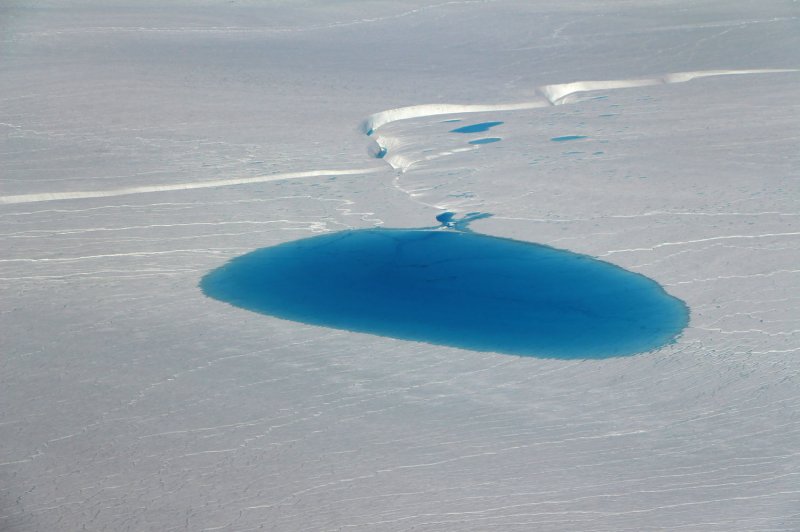New research suggests Greenland's melt rates are accelerating at an alarming rate. NASA Photo by John Sonntag/UPI |
License Photo
Jan. 22 (UPI) -- Most of the research on Greenland's ice loss has focused on icebergs calving from glaciers along the island's southeast and northwest coasts. But new research suggests Greenland's southwest region, home to very few large glaciers, is losing ice at an alarming rate.
The new analysis of melting on the Arctic island -- detailed this week in the journal Proceedings of the National Academy of Sciences -- suggests the southwest coast experienced the greatest sustained ice loss between 2003 and 2013.
"Whatever this was, it couldn't be explained by glaciers, because there aren't many there," Michael Bevis, professor of geodynamics at Ohio State University, said in a news release. "It had to be the surface mass -- the ice was melting inland from the coastline."
Using data collected by the Gravity Recovery and Climate Experiment, GRACE, a satellite launched by NASA and Germany's space agency, scientists were able to calculate yearly ice mass loss across Greenland between 2002 and 2016.
On average, the continent lost 280 gigatons of ice annually, causing 0.03 inches of sea level rise each year. Ice loss wasn't steady between 2002 and 2016. Each year, the rate of ice loss accelerated. The data suggests Greenland is now losing four times as much ice each year as it was nearly two decades ago.
The new GRACE numbers also suggest Greenland's southwest region is largely to blame for the dramatic increase in ice loss.
"We knew we had one big problem with increasing rates of ice discharge by some large outlet glaciers," Bevis said. "But now we recognize a second serious problem: Increasingly, large amounts of ice mass are going to leave as meltwater, as rivers that flow into the sea."
Ice loss in the southwest can't be blamed on rising sea surface temperatures. Instead, scientists think a combination of global warming and an atmospheric pattern called the North Atlantic Oscillation are fueling larger meltwater rivers, draining large amounts of melted ice into the ocean.
"In the case of Greenland, global warming has brought summertime temperatures in a significant portion of Greenland close to the melting point, and the North Atlantic Oscillation has provided the extra push that caused large areas of ice to melt," said Bevis.
The new research suggests climate scientists and glaciologists need to play closer attention to whole ice sheets -- not just glaciers -- and the effects of climate change on snow packs and melting rates among Greenland's interior.















